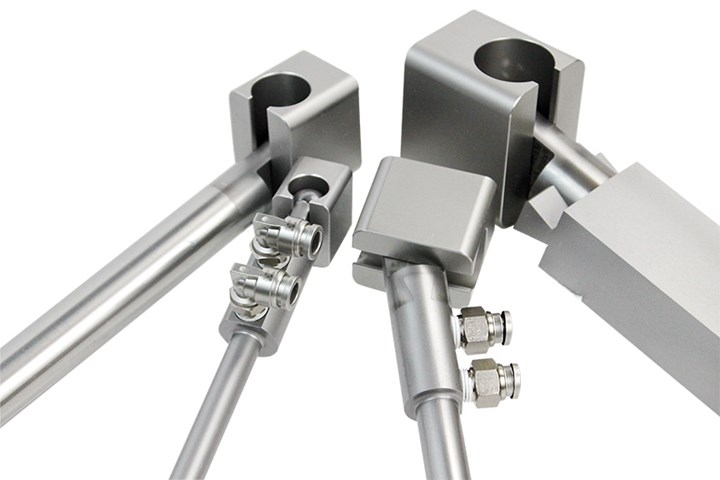Self-Adjusting Precision Lifter
DME’s Accualign lifter features a multi-axis self-adjustment system that compensates for misalignment.
Share
DME has redesigned its proprietary Accualign lifters created to accommodate undercuts and allow for the successful ejection of parts. With older designs, any flaws in the original manufacture of the tool or plate movement caused by thermal expansion during molding can cause misalignment and put pressure on the lifter, ultimately leading it to bind or even break.
DME says its multi-axis self-adjustment system compensates for misalignment. The 3D movement is accomplished by applying a carbide ball adapter that rides in a hardened shoe. This allows the rod and bar to self-adjust to the correct non-binding position vertically. DME says this design is complemented by a dovetail connection between the rod/bar and the ball adapter to adjust horizontally.
Accualign lifters are available in both imperial or metric dimensions; rod with a guide bushing (and optional keeper key to secure the lift head); or square/rectangle bar with carbide roller guides for support and long life.

DME Accualign Lifter features a carbide ball adapter that rides in a hardened shoe for movement in multiple axes.
Related Content
-
Back to Basics on Mold Venting (Part 1)
Here’s what you need to know to improve the quality of your parts and to protect your molds.
-
How to Select the Right Tool Steel for Mold Cavities
With cavity steel or alloy selection there are many variables that can dictate the best option.
-
Tunnel Gates for Mold Designers, Part 1
Of all the gate types, tunnel gates are the most misunderstood. Here’s what you need to know to choose the best design for your application.










